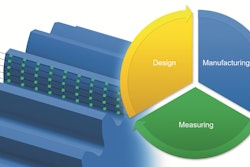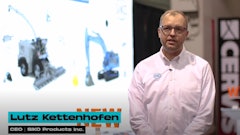
By providing a hub for all the information relating to a product, Product Lifestyle Management (PLM) software can bring disparate teams together and accelerate product launches while ensuring quality and regulatory compliance. More and more firms are looking to create a digital thread of their operations by connecting information flows within and between departments, manufacturers, and industrial firms. All told, manufacturers worldwide will increase their spending on PLM software by a CAGR of 6.2% from 2020-2026, reaching US$5.8 billion in 2026, forecasts global tech market advisory firm ABI Research.
“Historically, engineering teams used PLM software to collaborate on new product designs. Today’s PLM software can do this and so much more. In many cases, the software provides designers with the ability not only to tweak designs but also to simulate the impact on product and production line performance,” explains Michael Larner, Principal Analyst at ABI Research.
The automotive and electronics sectors are the standouts looking to PLM software to manage their operations. The automotive sector will be the largest spender, accounting for 22.8% of spending in 2026 (US$1.31 billion), using PLM software to accommodate data flow related to the production line while tapping into data residing with supply chain partners and dealer networks. The electronics vertical has suppliers looking at PLM software to help create intricate parts and get the assembly line to produce products at ever-accelerating rates. Spending by electronics firms is forecast to reach US$624 million in 2026.
PLM solutions from suppliers such as Autodesk, PTC, and Siemens provide manufacturers with the ability to create products that will perform as desired, give traceability to meet regulatory standards, and provide all stakeholders with insights into the impact tweaks have on costs and the supply chain.
“Having a solution that provides manufacturers’ teams with a digital thread covering all aspects involved in designing and producing a product will be essential for manufacturers to avoid costly errors and hasten the innovation cycle so that they stay ahead of the competition,” Larner concludes.
These findings are from ABI Research’s Industrial Product Lifecycle Management (PLM) Software: Gaining Insights from the Cradle to Grave application analysis report.







![Monitor Systemlinkdash[1]](https://img.oemoffhighway.com/files/base/acbm/ooh/image/2020/08/Monitor_systemlinkdash_1_.5f31c5a0846e7.5f31c5b3be59c.png?auto=format%2Ccompress&fit=crop&h=167&q=70&rect=120%2C0%2C1677%2C939&w=250)










